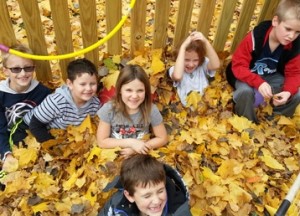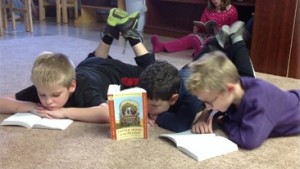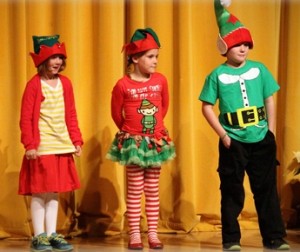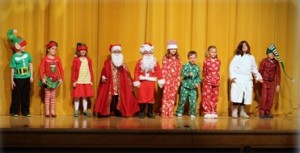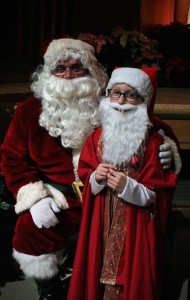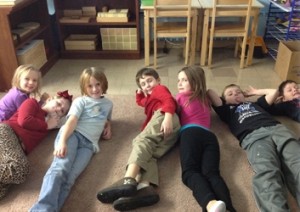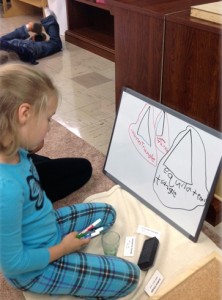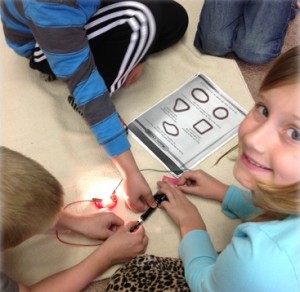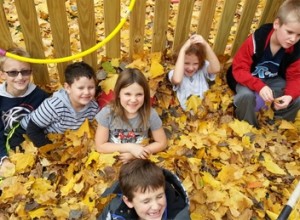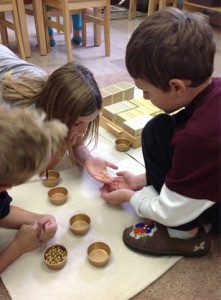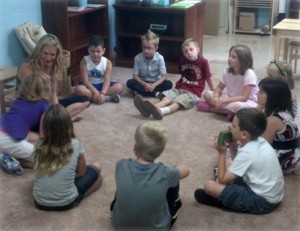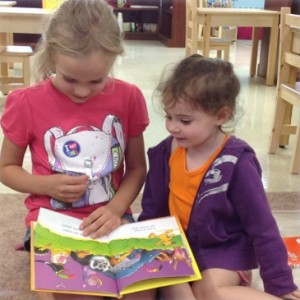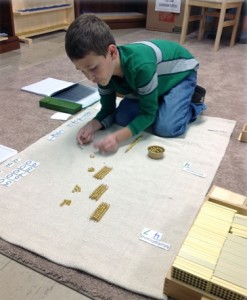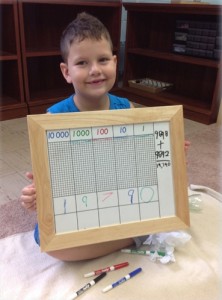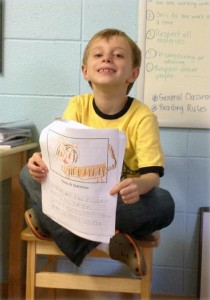The Elementary Journey
When the child enters our elementary classroom, he will find himself in an environment full of knowledge waiting to be discovered. His academic studies will be challenged with the curriculum outlined below, and his life skills will be nurtured, allowing him to grow into the person he was created to be.
Life Skills
There is no tangible measurement of character, initiative or inner drive; yet these are the life skills your child will develop at Absorbent Minds Montessori School. Weekly and daily goal setting, encouraged and reinforced by the teacher, guides the work of the elementary student; thus creating a strong sense of ownership of their education. Responsibility has the power to educate through self-direction. Your child’s confidence and self-esteem will grow and flourish as he learns to challenge himself until he becomes proficient in a skill. This personal drive will catapult your child into a world of information where his work ethic will create the character he needs to become a truly great person.
Mathematics/Geometry
Every child uses the environment around him to learn, thus creating his Absorbent Mind. This, in conjunction with what we have discovered through current research of the hand constructing the neurological pathways of the brain, we can conclude, that mathematics is made easy if its roots can be implanted in the work of the hand that is developing the mind. Children are provided the opportunity to touch, feel and experience math. Every material takes the child on a tangible journey through operations, memorization, graphing, fractions, square and cube roots, the study of lines, angles, area, and equivalence. Through these experiences guided by the hand, each student discovers the process of how an answer is found, and gains an understanding of why an answer is correct.
Language
From birth, all children pass through a period in which they can only pronounce syllable; then in early childhood they pronounce whole words, and finally, as a young student they use to perfection all the rules of syntax and grammar. Our curriculum encompasses reading, print and cursive handwriting, spelling, grammar, creative writing, research, and oral presentation. Through stories, charts, timelines, purposefully created materials and carefully chosen books we enable the child to develop an understanding of language. Junior Great Books and studies of the Classics enrich each child’s reading experience. Discussions of life lessons learned from characters in stories such as Robinson Crusoe and Anne of Green Gables equips your child with creative thinking skills she will carry with her in all areas of life. “Learning to read and write becomes a delightful exercise, a loving guide to lead the child along pleasant pathways to the discovery of things he has actually performed. Yes, the child will suddenly find himself, one day, in possession of a little composition, a little ‘work of art,’ that has issued from his own pen!” (Maria Montessori. The Montessori Elementary Material.)
Biology/Physical Science
We believe curiosity is the foundation of all discovery. Our Montessori science curriculum seeks to cultivate the child’s natural curiosity and to allow children to discover the answers to all of their “why” questions. Through science we facilitate the child’s understanding and admiration for all living things and respect for our interconnectedness with nature. The universe and its parts are brought into your child’s hands through experimentation. Scientific study at Absorbent Minds Montessori School concentrates on the process of question, hypothesis, procedure, observation, data analysis and conclusion (the Scientific Method). This method teaches children to think before deciding, to use a logical method of discovery and testing, and to use data to evaluate results and arrive at a thoughtful conclusion. Along with the process, the science curriculum provides each child a basic knowledge of chemistry, matter, energy, simple machines, water, engineering, and magnetism.
Cultural Subjects (History/ Geography)
The imagination of the elementary child flourishes when information is presented in the form of a story. Historical stories have the power to awaken the child’s imagination and take him on a tour of creation. This introduction will grab the child’s attention and encourage him to research the areas he find most interesting. As children discover new places through history, their interest in Geography intensifies. They start asking “where,” “why,” and “how.” The natural thirst for knowledge drives the child’s cultural studies through the solar system, physical and economic geography, map reading, vexillology (study of flags), and the study of rocks, minerals and biomes.
“Education boils down to two things: the student putting in the work to educate himself, and the teacher getting the student’s attention long enough and deeply enough to get him started and help keep him going.” (Oliver DeMille. A Thomas Jefferson Education. 2009.) Absorbent Minds Montessori School believes the child creates his own mental muscles, using what he finds in the world around him to accomplish this task. We call this type of mentality “The Absorbent Mind.” Through our prepared environment and curriculum beginning in preschool continuing throughout 4th grade your child will be equipped to develop his mind, body and soul.

